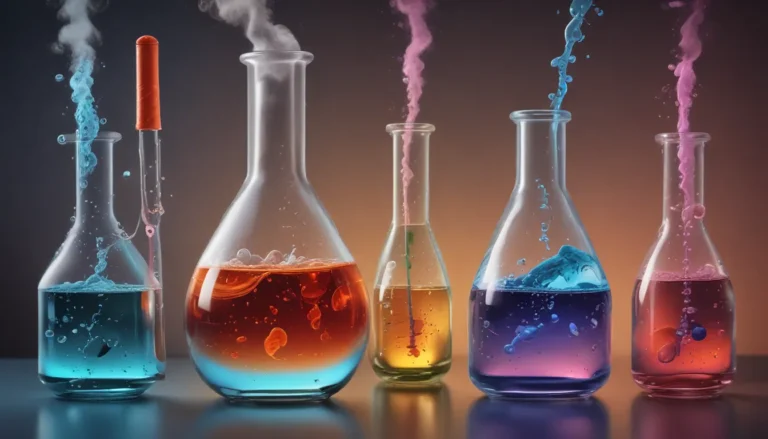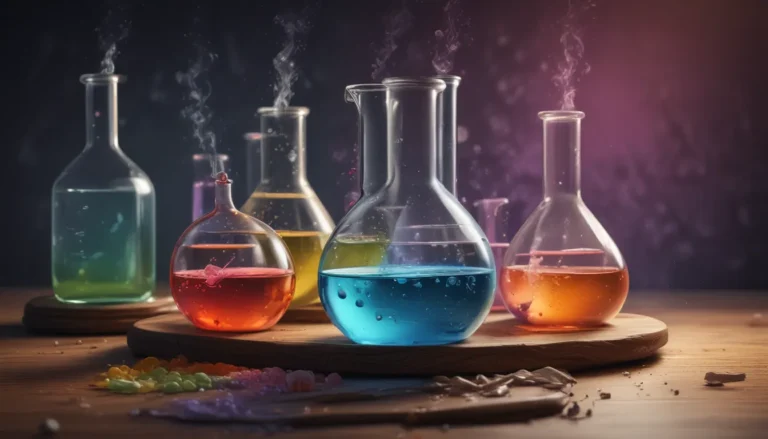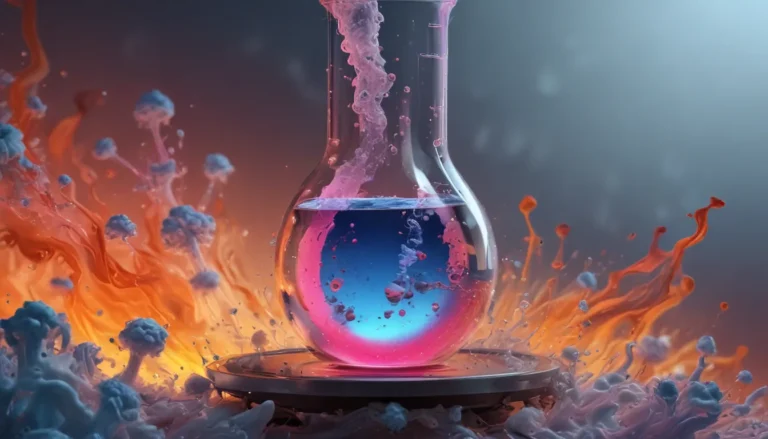A Note About Images: The images used in our articles are for illustration purposes only and may not exactly match the content. They are meant to engage readers, but the text should be relied upon for accurate information.
Chemistry is a captivating field that unravels the secrets of the world around us. One of the most fascinating areas of study within chemistry is the realm of oxidizing agents. These compounds hold a pivotal role in various chemical reactions, shaping the world we live in. Oxidizing agents have the unique ability to accept electrons from other substances, leading to the oxidation of those compounds. Let’s delve into the enigmatic world of oxidizing agents and uncover 8 intriguing facts that will expand your knowledge and appreciation for these essential compounds.
Essential Role in Chemical Reactions
Oxidizing agents are the catalysts that drive oxidation reactions by accepting electrons from other substances. These compounds play a fundamental role in a wide array of chemical reactions, from combustion processes to synthesis and corrosion. Understanding the properties of oxidizing agents is essential for comprehending how chemical reactions occur and how they impact our daily lives.
Oxidizing Agents in Everyday Life
Surprisingly, oxidizing agents can be found in numerous products we use daily. From bleach to hydrogen peroxide, these compounds are ubiquitous in cleaning agents, hair dyes, and even in the air we breathe. The versatile nature of oxidizing agents makes them indispensable in various household products and processes, showcasing their significance in our everyday routines.
Powerful Oxidizing Agents
Certain oxidizing agents stand out for their potent oxidation properties. Sodium hypochlorite (NaOCl) and potassium permanganate (KMnO4) are renowned for their robust oxidizing capabilities. These compounds are commonly used in laboratory experiments and industrial applications, highlighting their importance in scientific research and manufacturing processes.
Oxidizing Agents and Fire
Oxidizing agents are closely associated with fire hazards due to their ability to support combustion processes. Substances like oxygen, fluorine, and chlorine provide the necessary oxygen molecules for burning, making them crucial components in fire-related reactions. Understanding the role of oxidizing agents in fire hazards is essential for fire safety and prevention measures.
Oxidizing Agents and Rust
The formation of rust on metals is a common outcome of oxidation reactions. When oxidizing agents, such as oxygen and moisture in the air, react with metals like iron, they create the reddish-brown coating known as rust. This process serves as a quintessential example of oxidation in action, showcasing the transformative power of oxidizing agents on metal surfaces.
Oxidizing Agents in Organic Chemistry
Organic chemistry extensively utilizes oxidizing agents to introduce functional groups or convert one compound into another. Compounds like potassium dichromate (K2Cr2O7) and potassium permanganate (KMnO4) are frequently employed in organic synthesis processes, showcasing their versatility and efficacy in chemical transformations.
Oxidizing Agents and Biology
In biological systems, oxidizing agents play vital roles in processes like the respiratory chain in mitochondria. These compounds facilitate oxidation reactions that lead to the production of energy in the form of adenosine triphosphate (ATP). Understanding the biological significance of oxidizing agents sheds light on their essential functions in living organisms.
Oxidizing Agents in Environmental Impact
The industrial applications and human consumption of oxidizing agents can have significant environmental implications. Some oxidizing agents contribute to air pollution, while improper disposal can lead to contamination of water sources and soil. Awareness of the environmental impact of oxidizing agents is crucial for sustainable practices and pollution control measures.
In conclusion, the enigmatic world of oxidizing agents offers a vast expanse of knowledge and discovery for both students and professionals in the field of chemistry. By unraveling the mysteries of these essential compounds, we gain insight into their significance in various scientific disciplines and their impact on our everyday lives. Embracing the complexities of oxidizing agents allows us to harness their potential for innovation and progress in fields ranging from pharmaceuticals to environmental science.
FAQs: Unlocking the Secrets of Oxidizing Agents
Q: What is an oxidizing agent?
A: An oxidizing agent is a substance capable of accepting electrons from other substances during a chemical reaction, leading to oxidation.
Q: What are some common examples of oxidizing agents?
A: Common examples include oxygen, hydrogen peroxide, chlorine, and potassium permanganate.
Q: How do oxidizing agents work?
A: Oxidizing agents undergo reduction themselves, gaining electrons while causing oxidation in reacting substances.
Q: What are the uses of oxidizing agents?
A: Oxidizing agents find applications in chemical production, bleaching processes, disinfectants, and rocket propellants.
Q: Are oxidizing agents dangerous?
A: Some oxidizing agents can be hazardous and reactive, requiring proper handling and safety precautions.
Q: Can oxidizing agents be found in everyday products?
A: Yes, oxidizing agents are present in household cleaners, hair dyes, and toothpaste, among other products.
Q: What happens when an oxidizing agent reacts with a reducing agent?
A: A redox reaction occurs, where the oxidizing agent gains electrons (reduction) and the reducing agent loses electrons (oxidation).
Q: Can oxidizing agents be used for environmental purposes?
A: Yes, oxidizing agents play a role in water treatment and pollution control by breaking down harmful substances.
Oxidizing agents are not just compounds in a laboratory; they are essential components of our world, shaping chemical processes, biological systems, and environmental interactions. By delving into the captivating world of oxidizing agents, we gain a deeper understanding of their significance and influence in science and society. So, embrace the mystique of oxidizing agents and marvel at their transformative powers in our ever-evolving world of chemistry.






